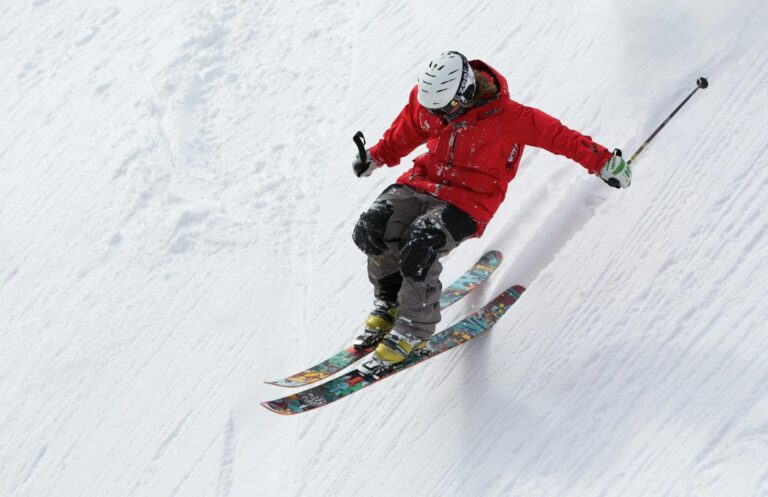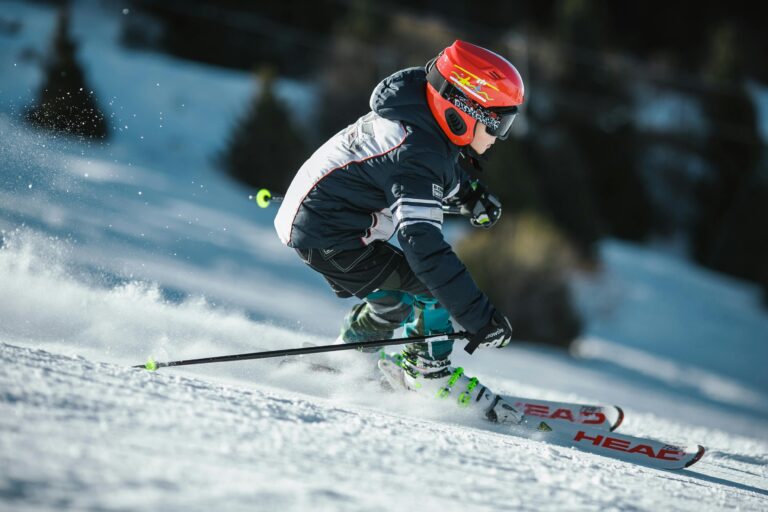Ever wondered if you can ski without a lesson? Well, you’re in luck! Learning to ski independently can be both an adventure and a challenge, allowing you to embrace the slopes on your own terms. This blog will explore how self-taught skiers can thrive, the gear you’ll need, the mistakes to avoid, and much more. So grab your snow gear, and let’s dive into the world of skiing without lessons!
Can You Learn Skiing Without Lessons?
Yes, you can learn skiing without lessons through self-practice, videos, and observing others, but it’s slower and riskier. Lessons speed up learning, teach proper technique, and improve safety. Without guidance, beginners often develop bad habits or struggle with confidence..
Skiing without lessons refers to teaching oneself the basics of skiing independently. Many self-taught skiers share inspiring testimonials about their journeys. For example, Ashley, a self-learner from Colorado, recalls, “I watched countless YouTube videos and spent hours practicing on beginner slopes. The sense of accomplishment after each small win kept me going.”
And there are actually hundreds or even thousands of people like Ashley who learned skiing on their own without any professional lessons.
It’s crucial to have self-confidence while learning to ski. Embracing challenges and sticking with the learning process not only helps you improve but also makes skiing more enjoyable. Self-discipline is key; it enhances your learning and plays a significant role in your overall experience on the slopes.
What Are the Pros and Cons of Learning to Ski Without Lessons?
While learning to ski without lessons can be cost-effective and flexible, it also presents challenges such as safety risks and a slower learning curve.
Pros:
- Cost Savings: Ski lessons can be pricey; self-learning helps you avoid these expenses.
- Flexibility: You can practice at your convenience, adapting your schedule as you wish.
- Personal Pace: You can focus on skills you feel need more attention without an instructor.
Cons:
- Safety Risks: Without supervision, you might develop poor techniques or land in tricky situations.
- Slow Learning Curve: Lacking professional guidance means it might take longer to master skills.
Michael, a self-taught skier, shares, “I spent a lot of time struggling with my stance and balance. Had I taken lessons, I might have grasped the basics quicker.” His experience perfectly illustrates the trade-offs between self-teaching and receiving guidance.
What Essential Gear Do You Need to Learn Skiing on Your Own?
Essential gear for skiing includes skis, boots, and a helmet. Investing in the right equipment is crucial for both safety and enjoyment.
Here’s a list of beginner essentials:
- Skis: Select skis based on your height and weight.
- Boots: Properly fitting boots are essential for control.
- Helmet: Wearing a helmet is a must for safety.
- Ski Poles: Useful for balance and turning.
Budget-Friendly Options:
- Rent gear at local ski resorts instead of buying everything upfront.
- Check out second-hand equipment from sporting goods stores or online platforms.
Suggested Gear Rental Locations:
- Local ski resorts often offer great rental deals.
- Look into online rental services that deliver gear right to your door.
How to Build Your Skiing Skills Without Professional Instruction?
You can effectively build skiing skills independently by utilizing online resources and practicing on beginner slopes while gradually increasing the challenge.
Recommended Online Resources:
- YouTube Channels: Excellent places for video tutorials, like “Ski School.”
- Websites: Organizations like AASI and NSAA provide safety tips and technique guidance.
Practical Steps:
- Start on gentle slopes to boost confidence.
- Focus on basic techniques like snowplow and turning before taking on big hills.
Tips for Gradual Skill Development:
- Set clear, achievable goals for every ski outing.
- Consider filming yourself to analyze your form and enhance skills.
What Safety Measures Should You Take When Skiing Without Lessons?
Safety is paramount when skiing without formal instruction. Wearing the right gear and understanding risks can help prevent injuries.
Safety Gear Recommendations:
- Always wear a helmet.
- Consider additional body padding if you’re new and prone to falls.
Common Injury Statistics:
The U.S. Consumer Product Safety Commission states that many skiing injuries occur among beginners, predominantly due to collisions.
Techniques for Safe Practices:
- Always ski with a buddy.
- Stay alert to your surroundings and fellow skiers.
- Familiarize yourself with the ski resort’s safety guidelines.
What Mindset Do You Need for Self-Teaching Skiing?
A positive mindset is vital for self-teaching skiing. Staying motivated and overcoming psychological barriers will help you master this challenging sport.
Techniques for Self-Motivation:
- Visualize your successes and set milestones to track achievements.
- Reward yourself after you learn new techniques.
Overcoming Psychological Barriers:
- Fear of injury can be daunting; concentrating on techniques and safety can help ease that anxiety.
- Surround yourself with supportive friends or fellow beginners for encouragement.
Benefits of Mindfulness:
Being mindful while skiing can enhance focus and enjoyment. Pay attention to your breath and body movements to improve both performance and pleasure.
How Can Parents Effectively Teach Their Kids to Ski Without Formal Lessons?
Parents can successfully teach their kids to ski by keeping it fun and safe while being patient throughout the learning process.
Age-Appropriate Tips:
- For young children, use playful language and make skiing into games to keep them engaged.
- Older kids may benefit from more structured mini-lessons focusing on techniques.
Safety Considerations for Children:
- Ensure that kids wear well-fitted helmets and ski gear.
- Practice on safe, beginner-friendly slopes without crowds.
Family-Friendly Ski Areas:
- Look for resorts that cater to families, offering dedicated zones for kids and beginner slopes.
What Resources Are Available for Self-Learners?
A wealth of resources is available for those who wish to learn skiing without formal lessons, such as tutorials, community forums, and supportive books.
Top YouTube Channels:
- Ski School: Detailed tutorials for every skill level.
- Skiing Made Easy: Focuses on key techniques and strategies.
Online Forums:
Sites like Ski Forum or Reddit’s skiing sub provide platforms where enthusiasts share tips and experiences.
Recommended Books and Apps:
- Book: “The All-Mountain Skier” offers in-depth insights on techniques.
- Apps: Ski tracking apps can help monitor progress and activity.
What Are Common Mistakes Self-Taught Skiers Make?
Self-taught skiers often make mistakes, including choosing the wrong gear or overlooking safety measures. Recognizing these mistakes is the first step to addressing them.
Common Mistakes to Avoid:
- Improper Gear: Using the wrong ski length or poorly fitting boots can hamper performance.
- Ignoring Safety: Skipping the helmet or skiing without safety gear can lead to injuries.
Mitigation Strategies:
- Spend time researching gear before purchasing or renting.
- Always be aware of the safety regulations at ski resorts.
Ben, a self-taught skier, shares, “I skied a whole day without a helmet, thinking I was invincible. That mistake scared me into always wearing one!” His experience underlines the importance of personal safety gear.
How Does Learning to Ski Without Lessons Differ by Age Group?
Learning to ski varies widely across age groups, influenced by their adaptability and physical fitness.
Differences in Learning Curves:
- Children: Typically adapt quicker due to natural flexibility and a fearless approach.
- Adults: May encounter mental blocks but usually possess better problem-solving skills.
Age-Specific Challenges:
- Young Learners: Require ongoing reassurance and patience.
- Older Learners: Need to pay attention to physical limits and recovery times.
A study by the National Ski Areas Association reveals that younger skiers learn faster than older beginners, illustrating the impact of age on skiing proficiency.
What Community Supports Are Available for Independent Learners?
Engaging with supportive communities can enhance the learning journey for independent skiers.
Local Ski Groups:
- Many communities offer ski clubs or meetups for newcomers.
- Local ski areas may host group activities or lessons that you can join.
Online Support Groups:
- Check Meetup or Facebook Groups for dedicated skiing communities that encourage questions and share advice.
Benefits of Peer-Assisted Learning:
Learning from fellow skiers can provide valuable insights and tips that you won’t find in formal education or tutorials.
Conclusion
With countless self-taught skiers sharing their experiences and helpful resources available online, you’re well-equipped to start your skiing adventure. Whether you’re purchasing gear or connecting with communities, remember that patience, practice, and determination are your best friends on the slopes. To get started, check out this informative video below!
FAQ Section
Can you learn skiing at any age?
Yes, skiing can be learned at any age; however, younger learners usually adapt more quickly. It’s important to consider safety and physical fitness, especially for older adults.
What is the best age for kids to start skiing?
Most kids can start skiing as early as 3-4 years old. Starting young helps them develop skills and confidence more readily.
Is learning to ski on your own effective?
Absolutely! Many people learn to ski on their own using online resources, but it does require motivation and a focus on safety.
What are the best resources for learning to ski without lessons?
Online videos, community forums, and skiing apps are excellent resources, with YouTube channels geared toward beginners being especially helpful.
For more skiing insights, consider checking our other articles here and here.





